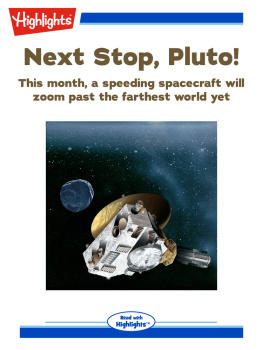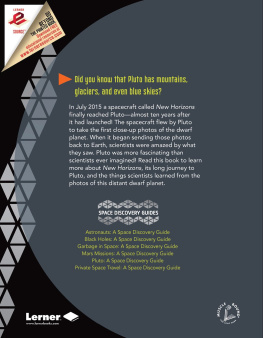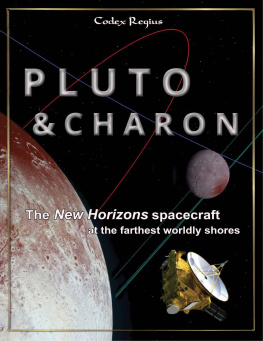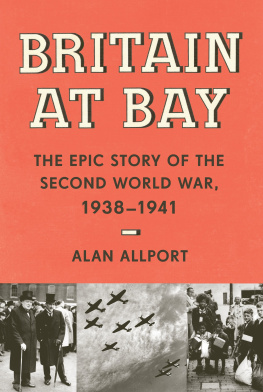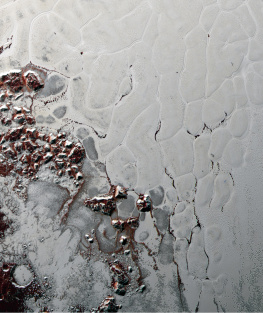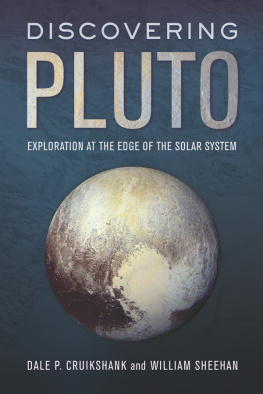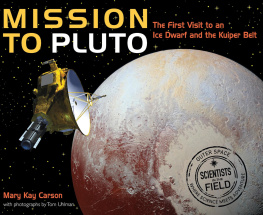Alan Stern - Chasing New Horizons: Inside the Epic First Mission to Pluto
Here you can read online Alan Stern - Chasing New Horizons: Inside the Epic First Mission to Pluto full text of the book (entire story) in english for free. Download pdf and epub, get meaning, cover and reviews about this ebook. year: 2018, publisher: Picador, genre: Romance novel. Description of the work, (preface) as well as reviews are available. Best literature library LitArk.com created for fans of good reading and offers a wide selection of genres:
Romance novel
Science fiction
Adventure
Detective
Science
History
Home and family
Prose
Art
Politics
Computer
Non-fiction
Religion
Business
Children
Humor
Choose a favorite category and find really read worthwhile books. Enjoy immersion in the world of imagination, feel the emotions of the characters or learn something new for yourself, make an fascinating discovery.

- Book:Chasing New Horizons: Inside the Epic First Mission to Pluto
- Author:
- Publisher:Picador
- Genre:
- Year:2018
- Rating:3 / 5
- Favourites:Add to favourites
- Your mark:
- 60
- 1
- 2
- 3
- 4
- 5
Chasing New Horizons: Inside the Epic First Mission to Pluto: summary, description and annotation
We offer to read an annotation, description, summary or preface (depends on what the author of the book "Chasing New Horizons: Inside the Epic First Mission to Pluto" wrote himself). If you haven't found the necessary information about the book — write in the comments, we will try to find it.
Alan Stern: author's other books
Who wrote Chasing New Horizons: Inside the Epic First Mission to Pluto? Find out the surname, the name of the author of the book and a list of all author's works by series.
Chasing New Horizons: Inside the Epic First Mission to Pluto — read online for free the complete book (whole text) full work
Below is the text of the book, divided by pages. System saving the place of the last page read, allows you to conveniently read the book "Chasing New Horizons: Inside the Epic First Mission to Pluto" online for free, without having to search again every time where you left off. Put a bookmark, and you can go to the page where you finished reading at any time.
Font size:
Interval:
Bookmark:
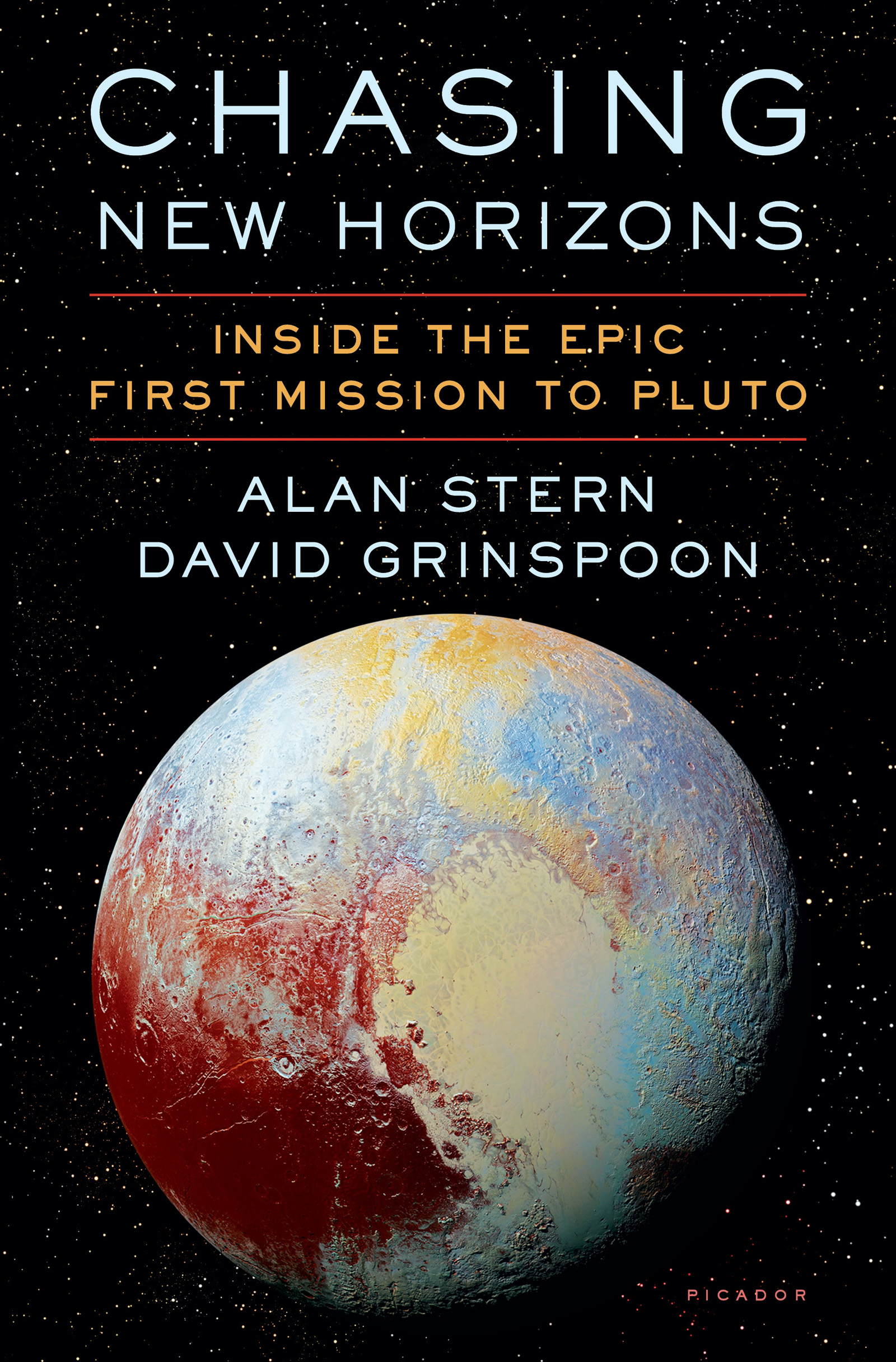
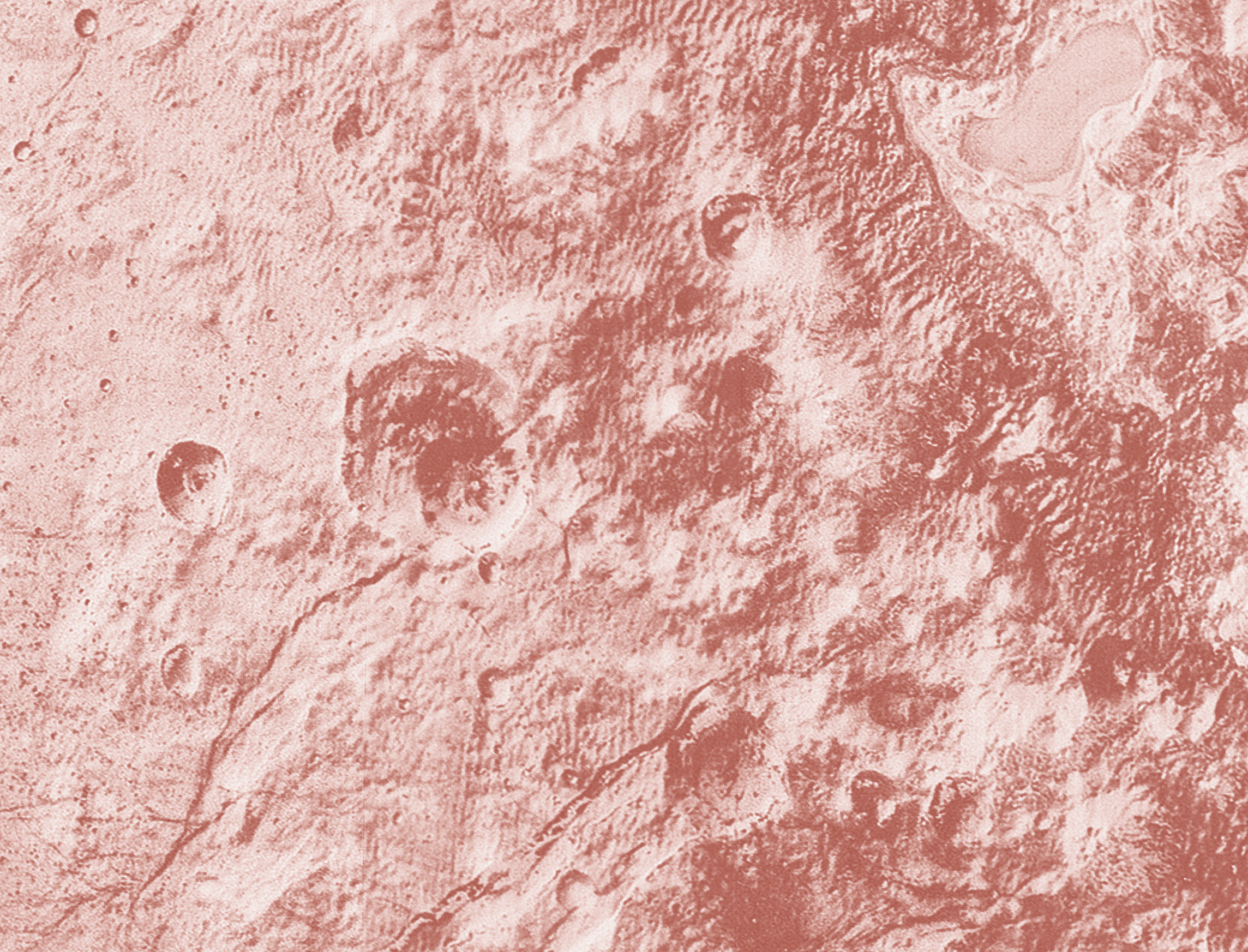

The author and publisher have provided this e-book to you for your personal use only. You may not make this e-book publicly available in any way. Copyright infringement is against the law. If you believe the copy of this e-book you are reading infringes on the authors copyright, please notify the publisher at: us.macmillanusa.com/piracy.
This book is dedicated to all the incredible men and women whose work contributed to New Horizons, to their families for supporting their dedication to its success, and to all the others who, along the way, helped make the exploration of Pluto possible.
In January of 2006, a tiny one-thousand-pound spacecraft, mounted on top of a powerful 224-foot-tall rocket, blasted off from Cape Canaveral, Florida. Thus began the longest and farthest journey of exploration our species has ever attempteda journey to explore Pluto, the last of the unvisited planets known at the dawn of the Space Age. That spaceship, aptly named New Horizons , carried the hopes and dreams of a team of scientists and engineers who had poured much of their lives into what hadat many timesseemed an improbable quest.
Some sixty years ago, we humans began reaching across spacethe final frontierto explore other worlds. Before that, such explorations could only take place in works of fiction. But in this new era, wesentient beings of the Suns third planethave begun to send humans and robotic ships across the vastness of space to explore other worlds. The period of time we live in will forever be known as the era when humans emerged from the cradle that is our planet, to become a spacefaring species.
In the 1960s and 1970s, NASAs Mariner spacecraft made humankinds first successful journeysto the closer planetsVenus, Mars, and Mercury, and humans first walked on the Moon. Also in the 1970s, NASA spacecraft called Pioneer were the first to reach Jupiter and Saturn, much farther away than the inner planets. Following that came NASAs Voyager project, originally cast as the grand tour mission that would visit all five then known outermost planets, from Jupiter to Pluto. But in the end, Voyager did explore Jupiter, Saturn, Uranus, and Neptune but did not travel to Pluto. And so, as the 1980s closed, all the then known planets but one had been visited by spacecraft. As a result, Pluto, that lone, unexplored planet, became something more: it became to some a symbol, an open challenge, and a dare.
NASAs New Horizons mission to Pluto, which resulted and which we chronicle here, was a logical continuation of all those previous first journeys of planetary exploration. Yet New Horizons was also, and in many ways, like nothing attempted ever before. Many doubted that it could be approved, and even more doubted there was enough money or time to build it, or that it would ever succeed. But as we describe in this book, a dedicated and persistent group of scientists and engineers defied expectations and over twenty-six years, made an almost impossible dream of exploration come true, in 2015.
Our goal in this book is to give you a sense of what it took to get this landmark space mission conceived, approved, funded, built, launched, and flown successfully to its oh-so-far-away target. There are many aspects of this story that are emblematic of modern space exploration. Yet there were also incidents and episodes completely unique to the story of New Horizons: unforeseen hazards, threats, misdeeds, and misfortunes that had to be overcome, and there were many fortuitous moments where luck and good fortune played a key role and without which the quest would have never succeeded.
We, this books authors, are two scientists whose involvement in New Horizons has been very differentone central, one peripheral. But we are joined in our shared excitement over both the exploration of faraway worlds and our wish to share the very special, fascinating, and largely untold story of New Horizons and how distant Pluto actually came to be explored.
Alan Sterns involvement is at the core of this story. Although literally thousands of people were involved in New Horizons, Alan was the projects leader from its very start. In contrast, David Grinspoon played only a tangential role in this story. Like Alan, David is a planetary scientist but he is also a writer by trade. For decades David has been a close friend and colleague of both Alans and many other key participants in this story, and David was present at many of the pivotal moments in the saga. For example, David served on NASAs all-important Solar System Exploration Subcommittee in the 1990s and early 2000s, where, as youll read, some of the crucial decisions were made that gave birth to New Horizons. And David was there at the raucous win party on Bourbon Street in New Orleans in 2001, when New Horizons had just been selected by NASA over proposals from fierce competitors. David was also at Cape Canaveral for the earsplitting, soaring launch to Pluto in 2006, and he helped the team devise strategies for public outreach surrounding the 2015 flyby of Pluto. When New Horizons explored Pluto, David worked with the science team as a press liaison to the media. Though many of Davids impressions and descriptions here are firsthand, he is not often a named character in this book. Rather, his voice here represents the books storyteller.
The two of us met twenty-five years ago, just after this story begins, and weve marveled at the series of unlikely events that has unfolded since that time, as we traveled through our lives, and as New Horizons fought for approval, was built, and traveled across our solar system.
In what follows, weve attempted to meld our voices to provide a combined and intimate perspective on the historic journey to conceive, create, and culminate in the exploration of Plutothe capstone journey in the first reconnaissance of the planets of our solar system.
The core material of this book came out of a long series of phone conversations the two of us had, every Saturday morning for a year and a half, in which we retraced the long adventure of New Horizons as Alan told David his memories of the project and all its precursors and phases. Out of the transcripts of these chats between us, David wrote the first drafts of most of the chapters, which we then both edited and rewrote many times, passing drafts back and forth and winnowing the narrative.
The result: this book synthesizes our two views of this amazing tale, supplemented by the voices of numerous other key players in the story. But this book is largely the story as seen through its leader Alans eyes, as told to David.
Writing this book together presented some challenges. For example, how would we refer to Alan? We couldnt, except in quoted passages, use the first person (as in I couldnt believe what I was hearing!) since David is a coauthor. Although it seemed a little strange to use the third person (as in Alan couldnt believe what he was hearing!) in a book with Alan as coauthor, yet, for stylistic purposes, we did elect to use the third person to refer to Alan. Alans voice, like the voices of others, appears in first-person quotes, often set off from the main text. Many of these quotes come from the transcripts of our Saturday conversations with which we began this project.
Font size:
Interval:
Bookmark:
Similar books «Chasing New Horizons: Inside the Epic First Mission to Pluto»
Look at similar books to Chasing New Horizons: Inside the Epic First Mission to Pluto. We have selected literature similar in name and meaning in the hope of providing readers with more options to find new, interesting, not yet read works.
Discussion, reviews of the book Chasing New Horizons: Inside the Epic First Mission to Pluto and just readers' own opinions. Leave your comments, write what you think about the work, its meaning or the main characters. Specify what exactly you liked and what you didn't like, and why you think so.

